|
|
|
Thames and Hudson
|
Pop Art embodied the spirit of the 1960s. Despite its carnival aspects, its orgiastic color and giant scale, it was based on a tough, no-nonsense, no-refinement standard appropriate to its time. Here several critics, each involved in Pop Art, but with different backgrounds, vividly bring the movement to life. Lucy Lippard examines Pop's precursor and related styles, ranging from folk art, Surrealism and Dada, to Assemblage, Rauschenberg and Jasper Johns. Lawrence Alloway contributes a chapter on the development of pop in England; Nancy Marmer considers Californian pop; Nicolas Calas, a member of the Surrealist movement in the 1930s and 40s assesses Pop icons. 187 illus., 18 in color. |
|
William Vaughan puts Gainsborough's work into the context of contemporaneous social and political developments in Britain, and in particular the celebration of original genius in a time of burgeoning entrepreneurial commercialism. He also discusses thoroughly Gainsborough's life and work — his childhood in Suffolk; his 'apprenticeship' in London; his marriage and the birth of his daughters; his move back to Suffolk and the birth of his career; his move to Bath and his incredible success as a society portrait painter; his move to London in 1774 where he reached the peak of his career, despite falling out with the Royal Academy and not being appointed official painter to the King; and his death in 1778. |
|
Some 15 years ago Cartier-Bresson decided to lay down the Leica and return to his first love painting and drawing to which he brings the same magic that infused his famous photographs. The foreword by John Russell (chief art critic, The New York Times) and introduction by Jean Clair. |
|
Already hailed by Dazed & Confused magazine as definitive, an instant cult classic, this new collection of club flyers provides a unique visual record of London's nightlife and subcultures. Covered with inventive, unfurling doodles, hand-drawn lettering and images of sexy figures and party animals, these low-budget productions are created from drawings, tracings, photocopies, photographs, cut-outs and collages, and reference flyers first inspired by the cut-and-paste era of the late 1980s, but now given inspirational new form in the current scene. By turns provocative, subversive, shocking, decorative and witty, these flyers provide an alternative history of London's ever-changing club circuit. |
|
This is an introduction to one of the great periods of Western art and provides a clear, dramatic account of the French art world under Louis XIII and Louis XIV. Drawing on research that places the art of the period in its context of religious and philosophical ideas, Christopher Allen provides the means for the reader to judge the meaning, relevance, success or failure of the art of this period. |
|
Britain has played a key role in the history of the last five centuries, and its art reflects this in absorbing but complex ways. At first, foreign artists and influences were dominant — for example, Holbein, Van Dyck, Lely and Kneller. In the century of Hogarth, Reynolds and Gainsborough, British painting reflected an increasingly confident society, propelled by Imperialist expansion and industrial advance. Constable and Turner were among many pioneers in the artistic revolutions of the Romantic period, when British influence extended across Europe. The Victorian age saw the moral dilemmas, reflected in art, of Christian values challenged by science. A consistent undercurrent has been Britain's preference for the real world (landscape and portraiture) as against high art and abstraction. This is a survey of the personalities of British painting and an assessment of the latest flowering in which many threads of modern art come together. |
|
This indispensable guide to the entire world of fashion has been completely revised to include detailed information on every important designer from 1840 up to the present day, including not only couturiers but also shoe, hat and knitwear specialists, costume designers, jewelers and hairdressers. It also covers the fashion media, photographers and illustrators, influential art movements, fashion terms, garment and accessory styles, technical processes, and every kind of fabric, as well as personalities who have influenced fashion or promoted a style. Extensively illustrated, international in scope and completely up to date, this is an essential sourcebook for designers, students, collectors and enthusiasts. |
|
Durable and easy to clean, tile has been a popular practical material for thousands of years, but its allure extends far beyond its ability to withstand wear and tear. Tile is a medium for bringing light and beauty into a space. Now, with more choices than ever before, tile has become an incredibly popular way to add personalized character to a home. In The Art of the Tile, tile enthusiast and design writer Jen Renzi walks readers through the basics, from incorporating certain materials in certain areas to installation considerations, from aesthetic aspects to pairing tiles with different patterns or materials in the same area. Focusing on choice and usability, this book is both accessible and inspiring, and will be of immense practical appeal to designers or anyone in search of ideas for their home. |
|
Features Basquiat's work from 1981 — the year of his first official participation in the group exhibition New York/New Wave at PS1 of New York — to his premature death in 1988. Controversial cult artist, enfant terrible of the art world, friend of Haring and Warhol, youth idol and tragic victim of a heroin overdose, Jean-Michel Basquiat was a legend in his own lifetime. This catalogue, published in conjunction with the major retrospective at the Lugano Museum of Modern Art, provides an excellent overview of Basquiat's life and work. Basquiat is the only African-American painter to have made a significant impact on the history of art. From his origins as a street graffiti artist, he soon became one of the most influential artists of his time — achieving the status of art world sensation. His explosive, colorful and apparently naif canvases have an unparalleled communicative force revealing an anguish of the contemporary world. The brief but intense artistic career of this celebrated and mythologized exponent of the downtown New York art scene of the 1980s is covered through some fifty paintings and twenty works on paper drawn from prestigious private collections and museums, offering a new occasion for dialogue with the more modern expressions of 20th century art. |
|
Clusters of white cottages huddled between hills of an unbelievably rich green, villages of a single street, dazzling in their array of color washes and picturesque shop-fronts-such are the villages of Ireland, which to this day are living working communities. The most beautiful of these villages are captured here in Christopher Fitz-Simon's sensitive commentaries and Hugh Palmer's evocative photographs. This is a journey full of rural gems, some famous, others less so. Here are the colored coastal villages of Cork, their vibrant houses sloping down to a sea that so many Irish people crossed to found other communities in America. Here too are the stunning medieval churches of Roscommon and Galway; and the villages of Antrim, standing ruggedly in defiance of the northern seas. |
|
First published in 1991, this book traces the history of glassmaking from its origins in Western Asia some 5000 years ago, through the invention of glassblowing around the first century BC, to the introduction of mechanised processes and new styles in the 19th and 20th centuries. It highlights the flourishing industries of ancient Mesopotamia and Egypt, the extraordinary achievements of the Roman Empire, the elegant vessels of the Islamic Near East, the superb mastery of Renaissance Venice and the wide-ranging experiments of modern Europe and America. A special feature of the book is the series of photographic sequences specially taken in the studio of a modern glassmaker as he reconstructs ancient techniques. With an all new final chapter by John P. Smith, Editor of The Glass Circle journal, to bring the book right up to date with the latest developments, 5000 Years of Glass is still the definitive single-volume general history of this most versatile art form. |
|
This book charts contemporary illustration's rich history: from the rampant idealism of the 1960s to the bleak realism of the 1970s, and from the over-blown consumerism of the 1980s to the digital explosion of the 1990s, followed by the increasing diversification of illustration in the early twenty-first century. The book explores the contexts in which the discipline has operated and looks historically, sociologically, politically, and culturally at the key factors at play across each decade, while artworks by key illustrators bring the decade to life. Contemporary illustration's impact and influence on design and popular culture are investigated through introductory essays and profiles of leading practitioners, illustrated with examples of the finest work. |

|
In 1884, at the age of twelve, the remarkable Miss Sarah Elizabeth Birdsall Otis known to all as Birdie made an extraordinary paper dolls house in the form of a book. While these were fashionable enough at the time, they were usually drawn and painted: Birdie, however, chose the medium of collage. Her albums exquisite rooms, accompanying paper dolls and tiny accessories are true works of art, full of period charm but also distinctly appealing to a modern taste and sensibility. Eric Boman's full-colour photographs capture Birdies remarkably vivid fantasy world in all its quirky splendour. Boman also provides an entertaining text giving her life story and the background to the making of the dolls house, accompanied by turn-of-the-century photographs found in her family albums. With an envelope at the back of the book containing press-out dolls and costumes from the original collection, this publication showcases an astonishing example of youthful creativity and is guaranteed to appeal to adults and children alike. |
|
Skywood has been called a house that turns lifestyle into a work of art and one that offers a masterclass in architectures power to excite and inspire. As a structure, it reflects rigour and attention to detail, attributes that its creator, Graham Phillips, credits both to his time at Foster & Partners, and to his experiences of buildings he loves, from Mies van der Rohes Barcelona Pavilion and Luis Barragans house in Mexico City, to the serene composition of Japanese gardens. Skywood House garnered immediate acclaim from the architectural and popular press. It also became a favoured setting for television and film producers, who found in its pure form and exquisite geometries the perfect backdrop for an array of dramatic scenarios. Known as the Va Va Voom house for its appearance in the 2005 Renault Clio television advert featuring the football titan Thierry Henry, Skywood continues to attract a popular and critical audience. And Phillipss further projects, carried out as an independent architect, resonate with the same sense of precision and elegance. |
|
During many eras of architectural history, builders and architects aimed to construct buildings with pure shapes and clear geometry, while foregoing decorative elements. With the advent of Classical Modernity, minimalism has become a seminal architectural style. However, the approach of architects cannot be limited to Mies van der Roh s dogma of Less is more, but corresponds rather to Less is all you need. Based on a select range of contemporary buildings, this book examines the question of how compelling esthetic impressions and expressions can be achieved with reduced shapes. Representing various types of structures, the chosen examples are mostly based on the concept of a simple comprehensive overall shape, focus on a few main materials as means of expression, and are comparatively simple to implement. Despite, or perhaps due to, the consistently applied limitations, the results are extremely remarkable. |
|
From the earliest days of Hollywood, the pressures of fame led to a febrile atmosphere among its stars. The magic of the movies made audiences pulses quicken, but what was really happening in the lives of the actors up on the silver screen? Hollywood Love Stories looks at 14 real-life love affairs across the golden age of the movies, from the 1920s to the 1970s. From the swashbuckling romance between Douglas Fairbanks and Mary Pickford, and the poignant lifelong affair between Spencer Tracey and Katherine Hepburn, to the scandalous liaison between Ingrid Bergman and Roberto Rossellini, each account offers insights and surprises, accompanied by wonderful images and ephemera that bring every love affair vividly alive. |
|
Casual Sweet Clothes offers you gorgeous tops, dresses, jackets and skirts with a designer edge. Simple step-by-step instructions and diagrams guide you through the process of sewing each garment, and the full-size patterns included at the back of the book guarantee perfectly fitting results every time. The 18 simple but stylish casual pieces in this book make the foundation of a hand-made wardrobe that will last for years. |

|
Inventions that Didn t Change the World is a fascinating visual tour through some of the most bizarre inventions registered with the British authorities in the nineteenth century. In an era when Britain was the workshop of the world, design protection (nowadays patenting) was all the rage, and the apparently lenient approval process meant that all manner of bizarre curiosities were painstakingly recorded, in beautiful color illustrations and well-penned explanatory text, alongside the genuinely great inventions of the period. Irreverent commentary contextualizes each submission as well as taking a humorous view on how each has stood the test of time. This book introduces such gems as a ventilating top hat; an artificial leech; a design for an aerial machine adapted for the arctic regions; an anti-explosive alarm whistle; a tennis racket with ball-picker; and a currant-cleaning machine. Here is everything the end user could possibly require for a problem he never knew he had. Organized by area of application industry, clothing, transportation, medical, health and safety, the home, and leisure Inventions that Didn t Change the World reveals the concerns of a bygone era giddy with the possibilities of a newly industrialized world. |
|
High up in mountains around the world, houses that have long been constructed following local building traditions are being transformed. Intrepid young architects using new technologies and materials are refashioning these traditions, with results that range from gemutlich (cozy) retreats to glamorous hilltop villas. Houses are presented in three sections: Cabin, Chalet, and Villa. Photographs of each house reveal its architecture, interior design, and striking setting, while plans provide an additional layer of information. Texts tell the story of how the dwelling was sited to make the most of its location, how new construction innovations were introduced, and how these solutions provide a comfortable space from which families can enjoy the great outdoors. While our cities become ever more concentrated, there is an increasing desire to experience nature as directly as possible. From the Highlands of Scotland to the breathtaking summits of the Alps and the adrenaline-fuelled mountain resorts of California, Mountain Modern is a journey to the most stunning homes of our planet. |
|
The first monograph devoted to this Italian architect and designer, exploring his twenty-year career. The works by Federico Delrosso (b. 1964) reflect the teachings of modernists-especially Gio Ponti, Ernesto Nathan Rogers, and Le Corbusier. This monograph is a complete overview of architectural plans for private and commercial buildings, interior decor, and design projects created over the past twenty years. |
|